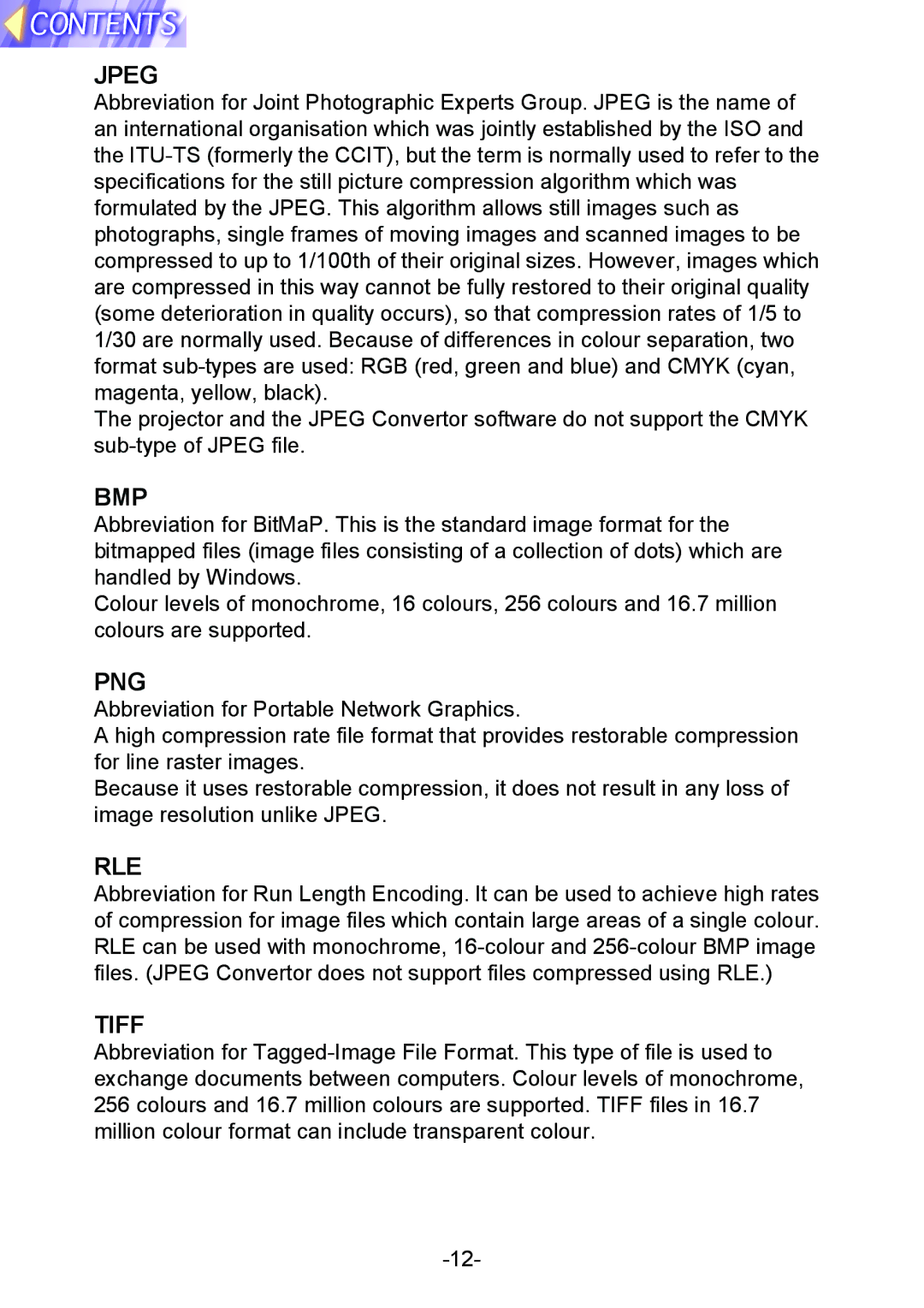JPEG
Abbreviation for Joint Photographic Experts Group. JPEG is the name of an international organisation which was jointly established by the ISO and the ITU-TS (formerly the CCIT), but the term is normally used to refer to the specifications for the still picture compression algorithm which was formulated by the JPEG. This algorithm allows still images such as photographs, single frames of moving images and scanned images to be compressed to up to 1/100th of their original sizes. However, images which are compressed in this way cannot be fully restored to their original quality (some deterioration in quality occurs), so that compression rates of 1/5 to 1/30 are normally used. Because of differences in colour separation, two format sub-types are used: RGB (red, green and blue) and CMYK (cyan, magenta, yellow, black).
The projector and the JPEG Convertor software do not support the CMYK sub-type of JPEG file.
BMP
Abbreviation for BitMaP. This is the standard image format for the bitmapped files (image files consisting of a collection of dots) which are handled by Windows.
Colour levels of monochrome, 16 colours, 256 colours and 16.7 million colours are supported.
PNG
Abbreviation for Portable Network Graphics.
A high compression rate file format that provides restorable compression for line raster images.
Because it uses restorable compression, it does not result in any loss of image resolution unlike JPEG.
RLE
Abbreviation for Run Length Encoding. It can be used to achieve high rates of compression for image files which contain large areas of a single colour. RLE can be used with monochrome, 16-colour and 256-colour BMP image files. (JPEG Convertor does not support files compressed using RLE.)
TIFF
Abbreviation for Tagged-Image File Format. This type of file is used to exchange documents between computers. Colour levels of monochrome, 256 colours and 16.7 million colours are supported. TIFF files in 16.7 million colour format can include transparent colour.
-12-
